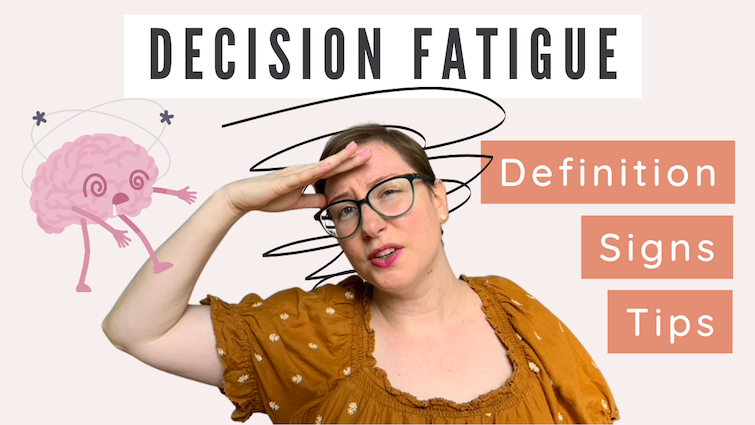Minimalism vs. KonMari Method - Similarities and Differences
Minimalism versus KonMari, is it the same, or is it different?
If you didn't know yet, I'm not only a certified KonMari Consultant but also a Minimalist. For the last seven-plus years, I have lived a minimalist lifestyle, which helped me tremendously to lower my anxiety levels and improve my mental health.
Let’s have a deep dive in this blog post! 😉 Or if you prefer to watch it, then you can also watch the video above.🎥
What is Minimalism?
I would say the goal of Minimalism is to simplify your life and only own what is necessary. So you can have no distractions from your material belongings but can focus on other things that are important to you.
A little disclaimer. When I talk about Minimalism, I mainly speak about what "The Minimalists" are teaching because this is the content I mostly consumed in my minimalism journey.
What's the KonMari Method?
The KonMari Method is about creating a life that sparks joy, meaning only owning the things that spark joy. So the things support you in creating the life that sparks joy. There are similarities in both approaches. However, the KonMari Method does not aim for owning as little as possible unless this is your big goal (aka ideal lifestyle vision) and you know you're konmari-ing your life to own as little as possible.
What do Minimalism and the KonMari Method have in common?
Both Minimalism and the KonMari Method are about living intentionally and mindfully. The why's essential. What is your goal, and what is the reason why you want to accomplish it?
It's also similar that the things that you learned throughout the process will change your future behavior. For example, in the future, you will probably shop differently because you learn from all the experiences and create skills along the way.
And those were pretty much the similarities.
What are the differences between Minimalism and the KonMari Method?
A Philosophy vs. One Person
Marie Kondo developed the KonMari Method, and it's only her method, not from a collective of people. Minimalism is a philosophy, and there are so many different directions and extremes, from very strict and maybe even extreme minimalists that own only 100 items to more easygoing minimalists that don't count their things (I am one of the latter). The KonMari Method asks, what does spark joy? And in Minimalism, it's more like, "If I let this go, does it spark more joy to let this item go and to be free of it?"
2. Decluttering vs. Tidying
Minimalism is mostly about decluttering, about letting go. However, the KonMari Method also has that part - the decluttering, but it's also about organizing and tidying. Marie Kondo teaches how you can organize all the things that are left after you finish decluttering.
3. Location vs. Category
Then another difference is that in Minimalism it's go by location. Wherever you want to start, you start - with a drawer, with a closet, you are free to pick whatever feels right. And with the KonMari Method, you don't organize or declutter by location but by category. You start with clothes, then go to books, paper, Komono (miscellaneous), and sentimental. And in Minimalism, there are quite playful ways to declutter.
30-day Minimalism Challenge:
In this challenge, you can let go of one more item each day. Day 1: 1 item; Day 2: 2 items; Day 3: 3 items. And so on. In the end, you let go of a massive amount of items. Maybe even more because you could always keep on going.
Packing Party:
You pack all of your things like you are moving. And then you only unpack the things that you actually use each day. After one (or even two weeks), you have a good understanding of what you actually need from your things and what you didn't. The items you didn't use can leave your home.
There are many more ways, but it's usually never by category like with the KonMari Method.
4. Slow(ish) vs. Fast:
In Minimalism, it's also said to go slow, "Go as slow as you want to go." I heard recommendations to do five minutes here and there, and it's about the progress and not about decluttering for hours in one sitting. Obviously, it depends on your personality or the challenge or game you use for your minimalism journey, but with the KonMari Method, it's never slow. It's never, "Five minutes here and there."
With the KonMari Method, it's recommended to do sessions of several hours, so you can move along fast because it's important to get momentum. Hence, you feel motivated for the categories that are getting harder and harder. With my clients, it depends on the category that we are working on. A clothes session can be between three and five hours - depending on the client's physical and mental energy levels. A session for sentimental things can also be only 1.5 hours because it comes closer to a therapy session, and three hours of a therapy session would be way too exhausting.
If I had to divide what's Minimalism more about and what the KonMari Method is more about, I would say that Minimalism is more about simplicity and maybe even sustainability and being critical of what we own. And the KonMari Method is more about emotions, like joy and gratitude, and has a very spiritual approach. When you let go of an item, you thank it.
What are the strengths of the KonMari Method, and Minimalism?
I see strength in both approaches. So this is why both approaches are my go-to. I appreciate Minimalism in thinking about how to make my life simpler and less stressful. I especially like maintaining fewer belongings and the possibility of saving money and moving into a smaller home, working less, or retiring earlier. Minimalism also helped me think more critically about the quality of each thing I buy and its effect on our planet and the people who made it.
The biggest strength of the KonMari Method is its emotional approach. Because let's be honest, I know from my own experience how challenging letting go can be - especially of sentimental items. And for the KonMari Method, it's given that we have emotional attachments to our belongings. And it's ok to honor and respect each item and the story we tied to it. There is no judgment with the KonMari Method.
With my clients, much more than decluttering, I listen to the many stories somebody carries in their heart about their belongings. My clients might not need to tell every story, but many stories. This is part of the letting go process. And this goes very deep. A logical and practical "When did you use it the last time?"-approach won't do the job for everything. Sometimes being as gentle as possible is the best way to go.
In my opinion, being practical and recognizing emotions is the healthiest and most sustainable way to go. That's why I use a mixture of the KonMari Method and useful minimalism tools for my clients.
Which one is right for you?
If you want to become a minimalist, the KonMari Method can be a fantastic starting point because it's a very strategic method with its categories and the organizational part. If you know that you have a big emotional attachment to your belongings, I recommend the KonMari Method.
If you are the opposite and logic is your way of life, then instead of asking yourself, "Does it spark joy?" use the terminology from Minimalism, "Do I need and use it?"
Final Thoughts
I see Minimalism and the KonMari Method as a buffet of many different things, and it's like picking and choosing what works best for the season you're in, which can be different from season to season. Ultimately, it's about growth, healing, and feeling happier and more content.
Changing something in your outer life will have effect for your inner life. On how you love yourself, how you love our world, and how you love others.
Thank you for taking the time to read the blog post! Please let me know what you think about Minimalism and the KonMari Method in the comments. Are you more of an emotional or logical type?
Free Resources for you
And if you want to go deeper into the KonMari Method ®, you can download my free KonMari guide, where I explain every step of the KonMari Method ®.
And if you are ready to rock and roll and declutter everything you own, I made a free digital KonMari declutter checklist.
PS: Sign up for my e-mail update to never miss a blog HERE.



Selling and donating are usually the two big categories people think of when decluttering. However, more options and strategies can help you release your items.